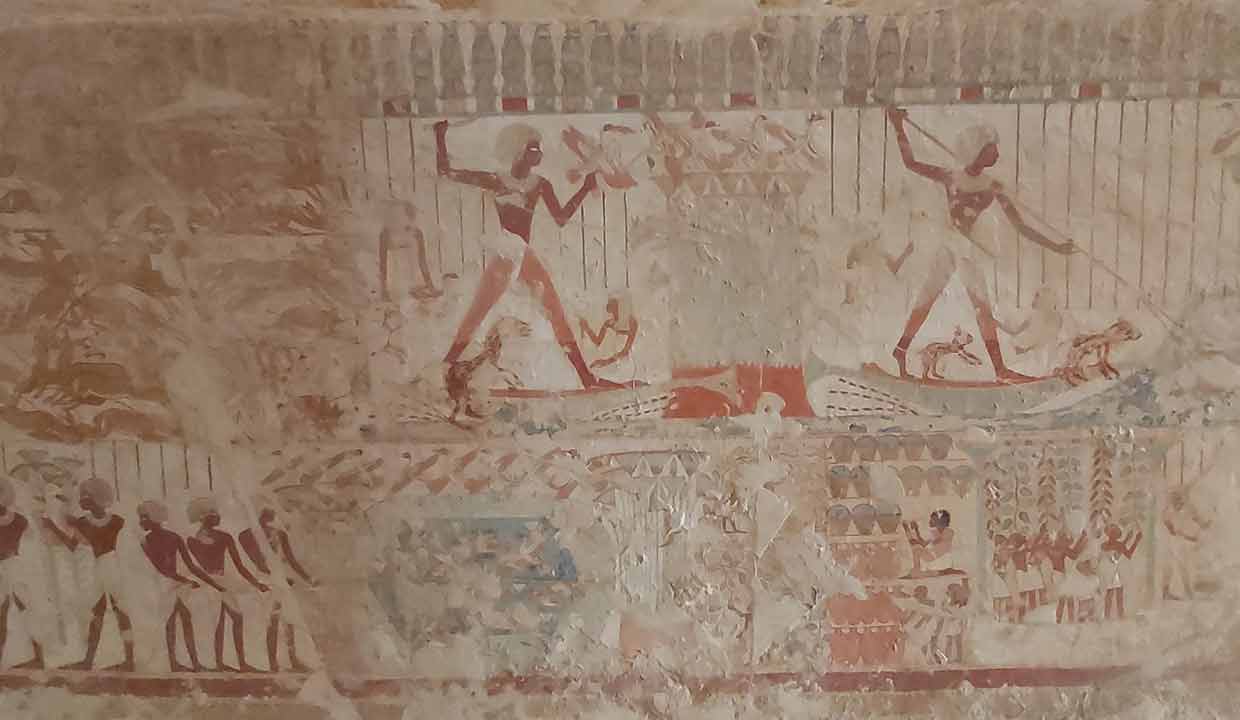Life in Ancient Egypt” beckons, unveiling tales of legendary dynasties, celestial deities, and the rhythm of age-old customs.
Ancient Egypt, with its majestic pyramids, intricate hieroglyphs, and enigmatic sphinxes, has always been a subject of profound fascination. But beyond the grandeur of its monumental structures and the allure of its mysterious rituals, what was daily life like for the ordinary citizens of this venerable civilization?
Geography and Climate: The Heart of Life
At the heart of Ancient Egyptian society was the Nile River. This vast, life-giving river provided a consistent water source, making agriculture possible in an otherwise inhospitable desert. The Nile’s annual flooding brought rich, fertile silt that rejuvenated the farmlands, ensuring a steady food supply.
Social Structure: From Pharaoh to Farmer
The society was hierarchically structured. At the top was the Pharaoh, a god-king who was believed to ensure the Nile’s regular flooding. Below the Pharaoh were the nobles, priests, officials, and soldiers, followed by artisans, farmers, and laborers. Slaves, many of whom were prisoners of war, were at the societal bottom.
Daily Life and Occupations
- Farmers: The majority of Egyptians were farmers. They cultivated wheat, barley, and flax, which were the primary crops, and also grew vegetables and fruits.
- Artisans: This group included potters, weavers, jewelers, and carpenters. They were usually employed in workshops or were part of larger building projects initiated by the Pharaoh or nobility.
- Merchants: Though the barter system was prevalent, merchants played a role in trading surplus goods, especially along the Nile, and in foreign lands.
Diet
Bread and beer were dietary staples for all social classes. Those of affluence consumed meat (like beef and fowl) more regularly, while the commoners ate it on festive occasions. Vegetables, lentils, and fruits like dates and figs complemented the diet.
Religion: A Pillar of Life
Religion permeated every aspect of daily life. Egyptians believed in a plethora of deities, each governing various aspects of nature and daily life. The Pharaoh was seen as the intermediary between the gods and the people.
Housing
Most Egyptians lived in mud-brick houses. Wealthier citizens had spacious homes with multiple rooms, painted walls, and courtyards, while commoners lived in simpler, one-roomed houses.
Leisure and Entertainment
Music, dance, and games were enjoyed by all. Sports like fishing, hunting, and boating on the Nile were popular pastimes. Feast days dedicated to various deities provided regular intervals of rest and recreation.
Education
Education was primarily reserved for the elite. Scribes, who played a crucial role in administrative functions, underwent rigorous training in reading and writing hieroglyphs.
Conclusion
Life in Ancient Egypt was shaped by the Nile, the sun, and their pantheon of gods. While pyramids and temples stand as testaments to their religious fervor and architectural prowess, it’s the rhythms of daily life – the farmer tilling the land, the artisan crafting in a workshop, and families gathering for a meal – that truly encapsulate the spirit of this remarkable civilization.
